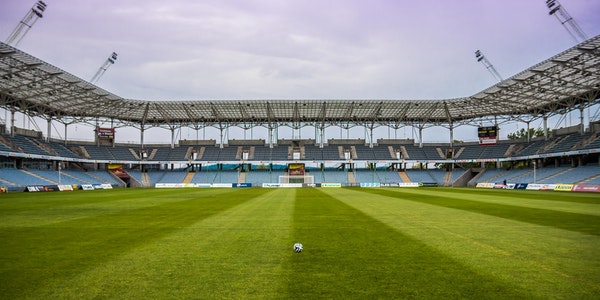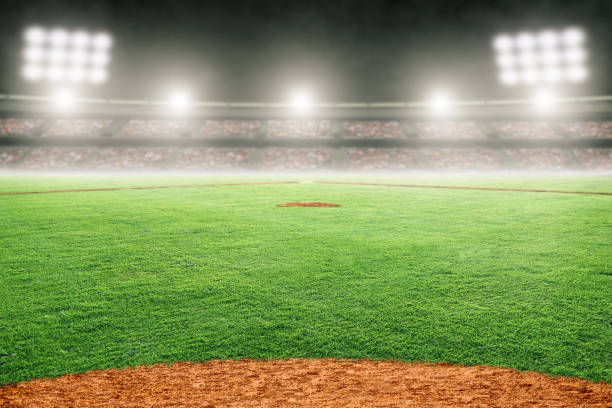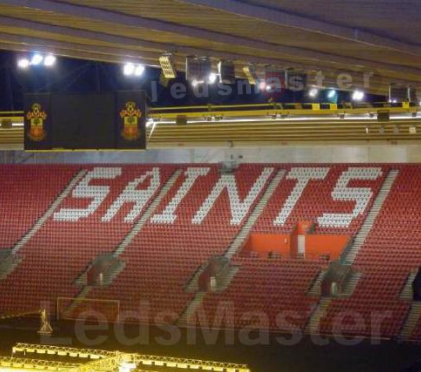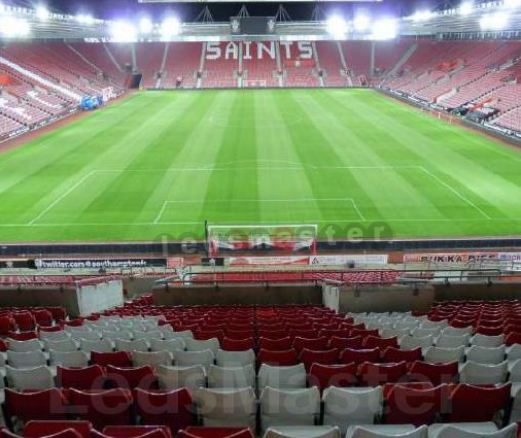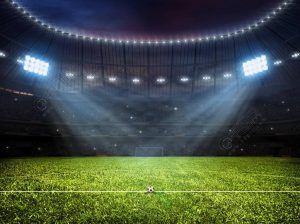(7) Compatibility with Existing Fixtures: Assess the compatibility of LED lighting fixtures with any existing lighting infrastructure or fixtures in the sports facility. Determine whether retrofitting existing fixtures with LED retrofit kits or replacing fixtures with new LED fixtures is the most practical and cost-effective solution based on compatibility, performance, and budget considerations.
(8) Regulatory Compliance: Ensure that LED lighting systems comply with relevant industry standards, building codes, and regulations governing lighting design, installation, and safety. Verify compliance with standards such as UL (Underwriters Laboratories), DLC (DesignLights Consortium), ENERGY STAR, and local building codes to ensure code compliance and safe operation of the lighting system.
By addressing these technical considerations and compatibility issues upfront, sports facilities can minimize risks, optimize performance, and ensure the successful transition to LED lighting systems that meet their specific needs and requirements. Consulting with lighting professionals, manufacturers, and industry experts can provide valuable insights and guidance to navigate these considerations effectively and achieve the desired outcomes.
C. Maintenance and longevity
Maintenance and longevity are crucial factors to consider when transitioning to LED lighting in sports facilities. Here’s an overview of maintenance practices and considerations for ensuring the longevity of LED lighting systems:
Maintenance Practices:
- Regular Cleaning: Schedule routine cleaning of LED fixtures to remove dust, dirt, and debris that can accumulate on the surfaces of the fixtures and affect light output and performance. Use non-abrasive cleaning solutions and soft cloths to avoid damaging the fixture lenses or coatings.
- Inspections: Conduct periodic inspections of LED fixtures to check for signs of wear, damage, or malfunction. Inspect wiring, connections, and components for loose connections, corrosion, or visible damage. Address any issues or anomalies promptly to prevent further damage or performance degradation.
- Testing and Calibration: Perform regular testing and calibration of LED lighting systems to verify proper operation, light output, and performance. Use light meters, lux meters, or photometric equipment to measure lighting levels and ensure compliance with design specifications and lighting standards.
- Component Replacement: Replace any worn-out or damaged components of LED fixtures, such as drivers, lenses, or LED modules, as needed to maintain optimal performance and reliability. Follow manufacturer recommendations and guidelines for component replacement to ensure compatibility and reliability.
- Firmware Updates: If LED fixtures are equipped with smart or programmable features, such as lighting controls or dimming systems, ensure that firmware updates are applied regularly to address software bugs, security vulnerabilities, or performance improvements. Follow manufacturer instructions and protocols for firmware updates to minimize risks and ensure compatibility with existing systems.
Longevity Considerations:
- Quality Assurance: Invest in high-quality LED lighting fixtures from reputable manufacturers known for producing reliable, durable, and long-lasting products. Choose fixtures with robust construction, quality components, and extended warranties to ensure longevity and reliability over time.
- Heat Management: Proper heat management is essential for maintaining the longevity of LED lighting systems. Ensure that LED fixtures are adequately ventilated and installed in well-ventilated spaces to dissipate heat effectively and prevent overheating, which can degrade performance and reduce lifespan.
- Environmental Conditions: Consider the environmental conditions and operating environment of the sports facility when selecting LED lighting fixtures. Choose fixtures with appropriate ingress protection (IP) ratings for indoor or outdoor use and resistance to moisture, dust, vibration, and temperature extremes to ensure durability and reliability in harsh conditions.
- Lifespan Ratings: LED fixtures typically have rated lifespans expressed in hours of operation, such as L70 or L80 ratings, indicating the point at which the fixtures are expected to reach a certain percentage of their initial light output. Choose LED fixtures with higher lifespan ratings to maximize longevity and minimize the need for replacements.
- Warranty Coverage: Verify the warranty coverage and terms provided by LED lighting manufacturers, including warranties for fixtures, components, and labor. Opt for fixtures with extended warranty periods and comprehensive coverage to protect against defects, malfunctions, or premature failures and minimize maintenance costs over time.
By implementing proactive maintenance practices and considering longevity factors when selecting LED lighting systems, sports facilities can maximize the lifespan, performance, and reliability of their lighting infrastructure, ensuring optimal illumination and operational efficiency for years to come.
D. Public perception and fan experience
Public perception and fan experience are critical considerations when transitioning to LED lighting in sports facilities. Here are some ways in which LED lighting can impact public perception and enhance the fan experience:
- Enhanced Visual Experience: LED lighting technology offers superior lighting quality, including brighter illumination, better color rendering, and reduced glare compared to traditional lighting sources. This enhances the visual experience for spectators, providing optimal visibility of the action on the field or court and improving overall enjoyment of the game.
- Dynamic Lighting Effects: LED lighting allows for dynamic lighting effects, color changes, and special effects that can create immersive and engaging experiences for fans. Sports facilities can use LED lighting to enhance pre-game introductions, halftime shows, and post-game celebrations, adding excitement and entertainment value to the fan experience.
- Branding and Atmosphere: LED lighting systems can be customized to match team colors, logos, and branding elements, reinforcing team identity and creating a cohesive and immersive atmosphere in the stadium. By incorporating team-specific lighting schemes and effects, sports facilities can strengthen fan loyalty and engagement while enhancing the overall ambiance of the venue.
- Interactive Engagement: LED lighting technology can be integrated with interactive elements, such as mobile apps, social media platforms, and stadium displays, to engage fans and enhance their interaction with the game and the venue. Sports facilities can use LED lighting to display real-time game statistics, interactive fan polls, and social media feeds, fostering a sense of community and participation among attendees.
- Environmental Responsibility: Transitioning to LED lighting demonstrates a commitment to environmental sustainability and corporate social responsibility, which can positively influence public perception and enhance the reputation of the sports facility and its stakeholders. By reducing energy consumption, greenhouse gas emissions, and light pollution, LED lighting contributes to a more sustainable and eco-friendly venue, resonating with environmentally conscious fans and stakeholders.
- Safety and Comfort: LED lighting systems can improve safety and comfort for fans by providing consistent, uniform illumination throughout the sports facility. Well-lit concourses, seating areas, and amenities enhance visibility and navigation for attendees, reducing the risk of accidents and enhancing the overall comfort and enjoyment of the fan experience.
Overall, LED lighting plays a crucial role in shaping public perception and enhancing the fan experience in sports facilities. By leveraging the capabilities of LED technology to create immersive, dynamic, and engaging lighting experiences, sports venues can strengthen fan loyalty, increase attendance, and elevate the overall reputation and image of the facility and its stakeholders.
VI. Future Trends and Opportunities
A. Potential for further innovation in LED technology
LED technology continues to evolve, presenting exciting opportunities for further innovation in various areas. Here are some potential avenues for advancement in LED technology:
- Efficiency Improvements: Researchers and manufacturers are continually working to improve the efficiency of LED chips and fixtures, enhancing their luminous efficacy and reducing energy consumption further. Advancements in materials science, semiconductor technology, and chip design are driving improvements in LED efficiency, leading to even greater energy savings and environmental benefits.
- Smart Lighting Solutions: The integration of LED lighting with smart technologies, such as Internet of Things (IoT) connectivity, sensors, and data analytics, enables the development of intelligent lighting systems that can adapt, optimize, and respond to changing conditions in real-time. Smart LED lighting solutions offer benefits such as automated lighting control, energy management, occupancy sensing, and personalized lighting experiences, enhancing efficiency, comfort, and convenience in various applications.
- Tunable Lighting Capabilities: Tunable LED lighting systems allow for dynamic adjustment of color temperature, brightness, and spectral characteristics, providing flexibility to create tailored lighting environments for different activities, settings, and user preferences. Advances in tunable LED technology enable applications such as circadian lighting for health and wellness, color-tuning for mood enhancement, and spectral tuning for specialized lighting requirements in industries such as horticulture, healthcare, and entertainment.
- Advanced Optics and Beam Control: Innovations in LED optics, lenses, and beam control technology enable precise control over light distribution, beam angles, and uniformity, allowing for optimized lighting designs and improved visual comfort. Advanced optics help minimize glare, reduce light spillage, and maximize light utilization, enhancing the efficiency and effectiveness of LED lighting systems in various indoor and outdoor applications.
- Integration with Renewable Energy: Combining LED lighting with renewable energy sources, such as solar power, wind power, or energy storage systems, offers opportunities to create sustainable lighting solutions with minimal environmental impact. Integrating LED lighting with renewable energy sources enables off-grid lighting installations, energy-independent lighting systems, and environmentally friendly lighting solutions for remote or environmentally sensitive locations.
- Miniaturization and Flexibility: Advances in LED miniaturization and flexible LED technologies enable the development of compact, lightweight, and versatile lighting solutions for diverse applications. Miniature LEDs and flexible LED strips offer flexibility in form factor, installation options, and architectural integration, allowing for creative and innovative lighting designs in interior spaces, architectural facades, signage, and wearable devices.
- Health and Wellness Applications: Research into the biological effects of light on human health and well-being is driving the development of LED lighting solutions that prioritize human-centric lighting principles. LED lighting with adjustable color temperatures and spectral characteristics can mimic natural daylight patterns, support circadian rhythms, and enhance alertness, productivity, and mood in indoor environments.
Overall, the potential for further innovation in LED technology is vast, with opportunities to enhance efficiency, intelligence, flexibility, and human-centricity in lighting solutions for various applications. Continued research, collaboration, and investment in LED technology are essential to unlock the full potential of LEDs and drive meaningful advancements in lighting technology for the future.
B. Influence on other sports facilities and events
The influence of LED lighting technology on other sports facilities and events is significant, shaping trends and driving advancements in the industry. Here are some ways in which LED lighting is influencing other sports facilities and events:
- Energy Efficiency Standards: The adoption of LED lighting in sports facilities sets a benchmark for energy efficiency and sustainability in the industry. As more venues transition to LED technology, there is increased pressure for other facilities to follow suit and implement energy-efficient lighting solutions to reduce environmental impact and operating costs.
- Enhanced Fan Experience: LED lighting technology enhances the fan experience by providing brighter, more vibrant illumination, dynamic lighting effects, and immersive visual displays. Other sports facilities and events seek to replicate these benefits by upgrading their lighting systems to LED, creating engaging and memorable experiences for spectators.
- Technological Integration: LED lighting systems can be integrated with advanced technologies such as sensors, data analytics, and smart controls to enhance operational efficiency, safety, and fan engagement. The integration of LED lighting with digital signage, video displays, and interactive features sets a precedent for technological innovation in sports venues and events.
- Sponsorship and Branding Opportunities: LED lighting offers new opportunities for sponsorship activation, branding, and revenue generation in sports facilities and events. Dynamic LED displays, signage, and lighting effects provide platforms for sponsors to showcase their brands, promotions, and messages in creative and engaging ways, enhancing sponsorship value and fan engagement.
(To Be Continued)

